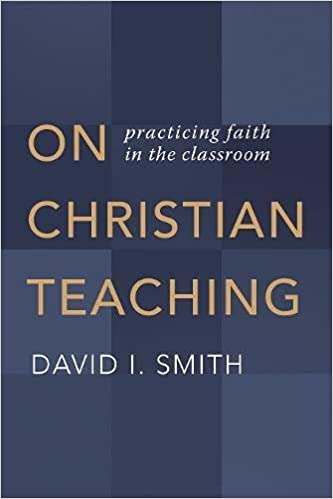by Kenneth Nehrbass
Smith’s book On Christian Teaching builds on a (too small) body of literature on how our faith should impact the way we design and deliver courses.
40% of Christian professors (n=2309) said that their faith does not influence their teaching methods (Smith, 2018, p. 145). In a compilation of nearly 300 books and articles on integration of faith and learning; I noted that very few resources discuss how Christianity impacts the way we design learning activities and assessments. Smith noted that it’s hard for us to get beyond trite principles like “be kind to students and behave ethically.”
Yet, Smith notes, faith informs not just the what and why, but the how (p. 68). He developed a three-fold plan:
1: See anew (question your discipline’s approach to pedagogy):
2: Choose engagement (should you do all lecture?); and,
3: Reshape practice (ask how Christian approach to teaching impacts your timing and use of space).
For example, you should consider the following:
- Treat students as image of God, not just assignment-completers
- Don’t end class with your evaluation of them (grade) and their evaluation of you (ratings)- put that a bit earlier on, and end with a service of blessing
- Insert sabbath into the timing
Other Christian educationists have suggested that faith integration is modeled in the way professors relate to students outside of class (Weeks & Isaak, 2012, p. 63). For example, Marmon (2008) encourages professors to apply the virtue of hospitality, with professors as the hosts, and students as the guests. Korniejczuk (1994) averred that “the most important manifestation of faith-learning integration is the daily life of the Christian teacher” (p. 4). For this “silent witness” be efficacious, though, the Christian teacher must model distinctly Christian characteristics, such as a passion for Jesus Christ.
Dockery (2008) conceptualizes the Christian college’s pedagogical as a “faithful community.” He uses Romans 12 to develop a list of building blocks that contribute to such a community: loving with a Christlike love, exercising discernment and patience, welcoming difference, living in peace, bearing each other’s burdens (pp. 95-97).
Note that Dr. Ted Murcray will be leading a book study in Jan 2022 to discuss Smith’s book On Christian Teaching. Click here to register for it.
How does your faith impact the way you design and deliver courses?
Dockery, D. (2008). Renewing minds: serving church and society through Christian higher education. Nashville, TN: Broadman and Holman.
Korniejczuk, R. (1994). Stages of deliberate teacher integration of faith and learning: The development and empirical validation of a model for Christian education. [Unpublished dissertation]. Andrews University.
Marmon, E. (2008). Teaching as hospitality. Asbury Theological Journal 63 (2) 33-39.
Smith, D. (2018). On Christian teaching: Practicing faith in the classroom. Grand Rapids, MI: Eerdmans
Weeks & Isaak (2012). “A coda on faith, learning and scholarly rigor. In Joeckel and Chesnes, The Christian College phenomenon. Abilene, TX: Abilene Christian University Press.
